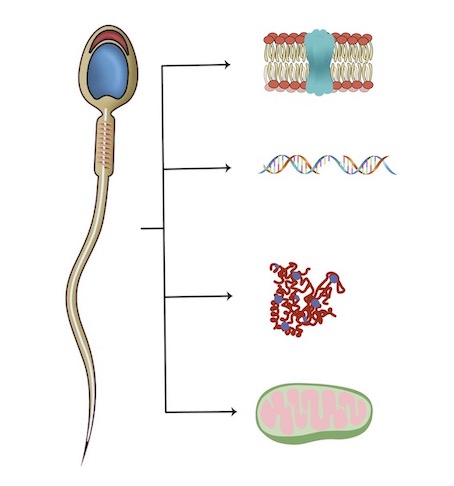Sometimes very specialized sperm tests are needed.
When a couple has difficulty getting pregnant, the male partner will usually undergo a basic semen analysis test to start with. This test gives us the following information:
- Ejaculate volume
- Semen pH (acidity)
- Sperm count (concentration)
- Sperm movement (motility)
In some cases, however, more advanced sperm testing is required. These tests may include:
Sperm strict morphology
Under the light microscope (providing up to 400X magnification) the structure of the sperm cells is meticulously inspected. The percentage of normal-looking sperm is then reported. The cutoff is that more than 4% of the sperm should be structurally normal. If too many sperms are abnormally formed then pregnancy will be less likely. Various treatments are available to help improve sperm morphology.
Advanced sperm tests can identify causes of unexplained male infertility

Sperm DNA-integrity tests
Some men may have an absolutely normal standard sperm analysis test result but still not be able to achieve pregnancy. Or a couple may have repeated failed fertility treatment cycles (IVF/ICSI). In these cases, the culprit can be the quality of DNA within the sperm cell. This can be assessed by specialized sperm DNA integrity tests – DNA Fragmentation Index or Sperm Chromatin Structure Assay (SCSA). Once we know that DNA integrity is the problem, we can focus on treatment to rectify this. Another option is to obtain sperm directly from the testicle as the sperm here often have better with better quality DNA than ejaculated sperm.
Sperm antibody tests
Antibodies are part of the body’s normal defense mechanisms. However, some men may have antibodies which work against their own sperm. These antibodies may be in the blood only or also on the sperms themselves. Antibodies are not a common cause of male infertility (only about 2% of cases). We do sometimes have to check for antibodies in the sperm (also called an MAR-test) – if these are present pregnancy is still possible but additional treatments or interventions may be required.
